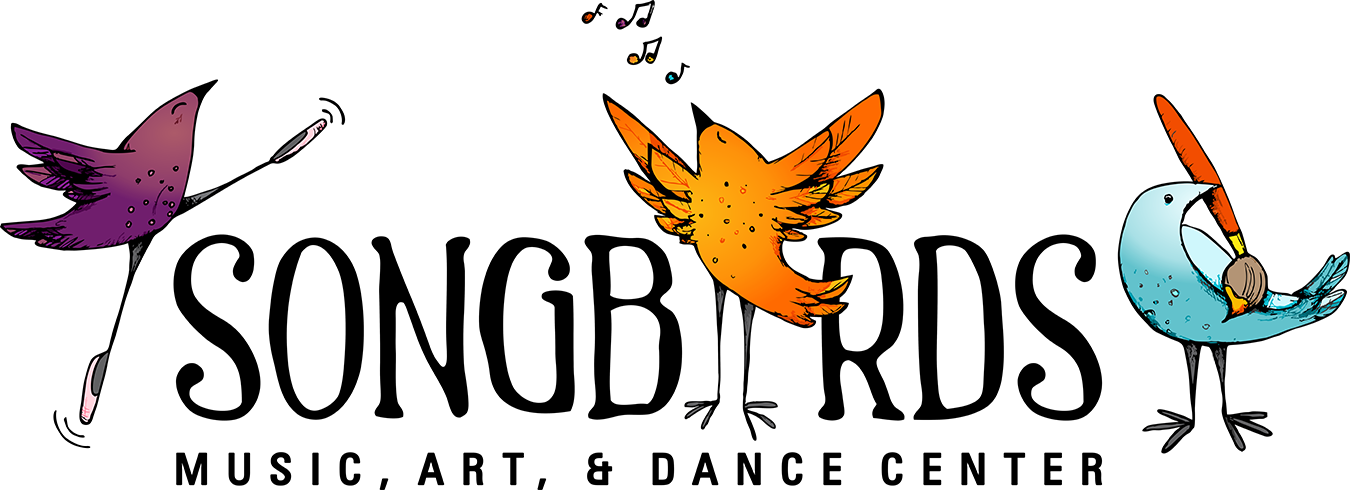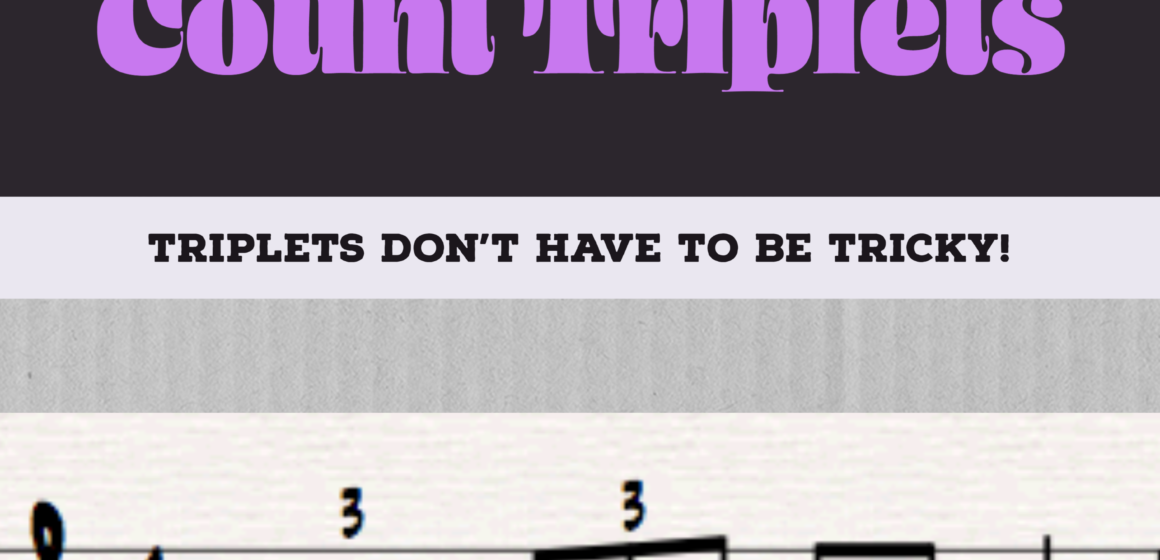How to Actually Count Triplets
Music notation is full of all kinds of tricky rhythms, but one of the hardest to master as a beginner or intermediate student is the triplet (duhn duhn duhnnn!). Learn how to properly count it with this guide. Once you learn how to count them, you’ll never have to second-guess triplets again!
What is a Triplet?
In case you missed it, a triplet is a group of three notes that are grouped together. They often have a beam that connects them, and there’s almost always a little ‘3’ above or below them to indicate that they belong in a triplet group.
Triplets are tricky (say that ten times fast) because we often encounter them in even-beat meters like 4/4. In these meters, we usually count and feel the rhythmic stresses in groups of two. For example, eighth notes are commonly counted “one and / two and / three and / four / and”. With triplets, you have to somehow smush three notes in a space that normally only fits two. Eighth-note triplets go by slightly faster than their eighth-note counterparts, for example. So, how do we accurately count this?
Bonus: Triplets exist in triple meters like 6/8 all the time. We feel and count groups of three easily in that territory. A group of two notes in a triple meter behaves and “feels” like a triplet in 4/4. This is called a duple and goes by slightly slower than the normal triplet grouping. For example, in 6/8, three eighth notes normally fill half the measure, or the space of one dotted quarter note. A duple fills that same space, so those two notes are heard as just a little slower or elongated. Duples in triple meters are the opposite of triplets in duple meters.
How Triplets are Taught:
There’s a lot of variance in the way that music education is approached across the world. From general music class teachers to private instructors, a lot gets missed along the way. I was taught that triplets should be felt, not counted. This is pretty tricky for a middle school band kid. My teacher said that you can count triplets by saying “tri-pl-et” for each note as they go by. So, in 4/4, I could count it as “one and / two and / three / and / tri-pl-et”. I’ve heard that this method is still pretty common.
The issue with this is that there isn’t a way to tell which beat (or where in the beat) you are. We usually count sixteenth notes as “one ee and ah / two ee and ah / three ee and ah / four ee and ah”, so we should adopt a similar trick for triplets.
Count Triplets Like This:
One ah lee / Two ah lee / Three ah lee / Four ah lee.
If you prefer, you can think of it as “ollie” and imagine the notes doing cool skateboard tricks on your music.
This style of counting will help you always know where you are in the measure. If you have sixteenth-note triplets, you can insert the syllable “ee” like we do for regular sixteenth-notes. That would sound like this: “one ah lee / two ah lee / three ah lee / four ee ah ee lee lee”.
A Note (Pun Intended) on Counting:
This could get its own blog post (and maybe it will), but Counts and Beats are NOT the same thing. They often get used interchangeably, especially in school. Here’s the difference:
Counts are how you navigate the music. If our song is in 4/4, it has four quarter notes in the measure and we COUNT the unit of the quarter note. We say “one, two, three, four”. If the song switches to 2/4, we still COUNT quarter notes, but only two: “one, two”.
Beats are how you FEEL the music. There’s not a consistent way to feel music, and beats can be fluid. In 4/4, we commonly feel the strong beats on beats one and three. In a dance song, you may COUNT in four but BEAT (or feel) the music in two.
This is easier to hear in 6/8. In this example, we count sixth eighth notes per measure, or “one two three four five six”. I’ve highlighted counts one and four because those are usually the strongest counts and are where we feel the beat. A student playing the music may be counting in 6/8, but the conductor leading the band may be using a conducting pattern that only has two distinct motions – a beat of two. Something to keep in mind, especially when learning trickier rhythms like triplets.
Conclusion:
I hope this helps you work on triplets and other more advanced passages in your music playing! Stay tuned for more information on the Knowledge Blog, and keep practicing!
Special Thanks to Dr. Tim Peterman, drumming extraordinaire, for clarifying the mystery of triplets. 🙂

